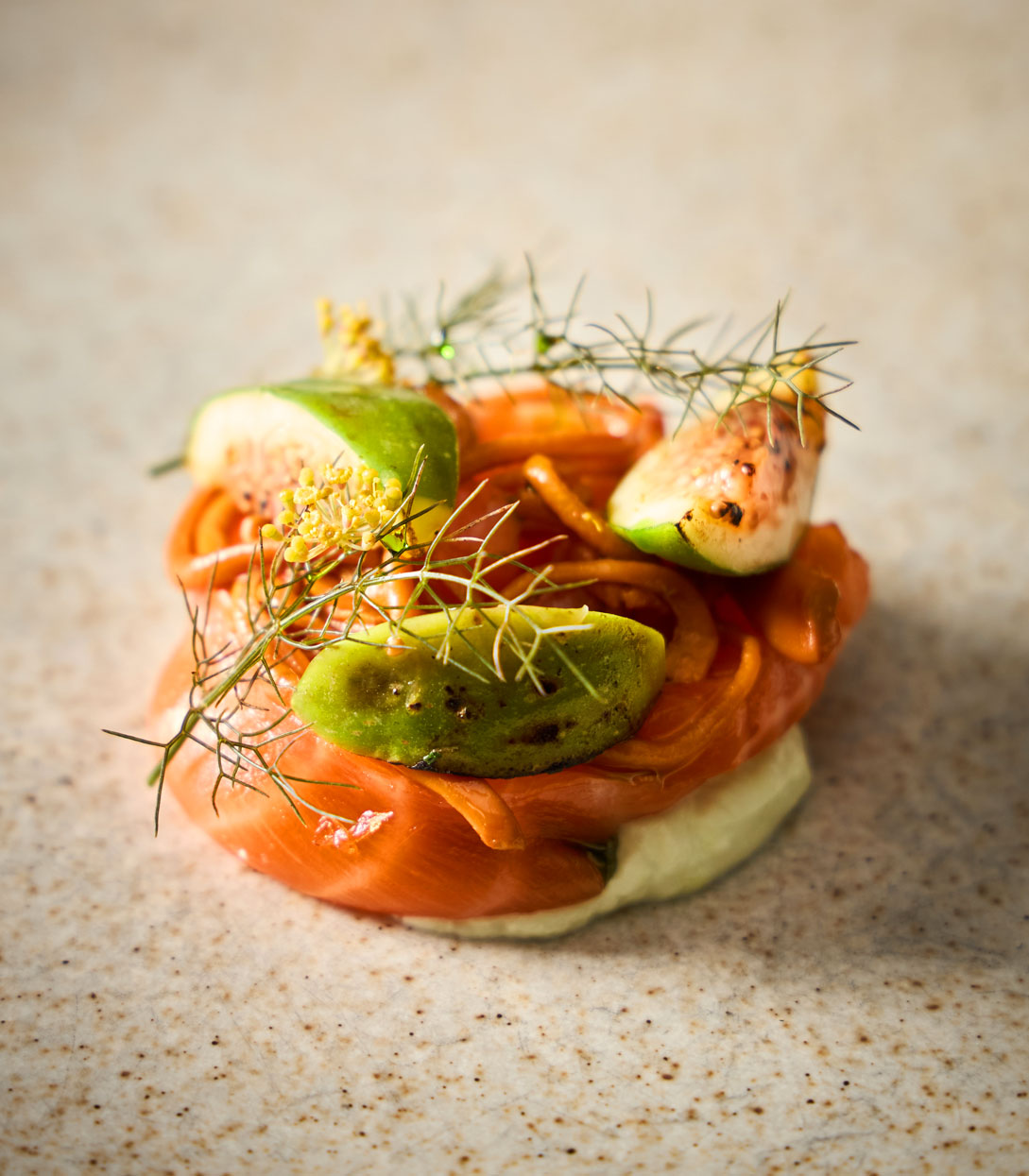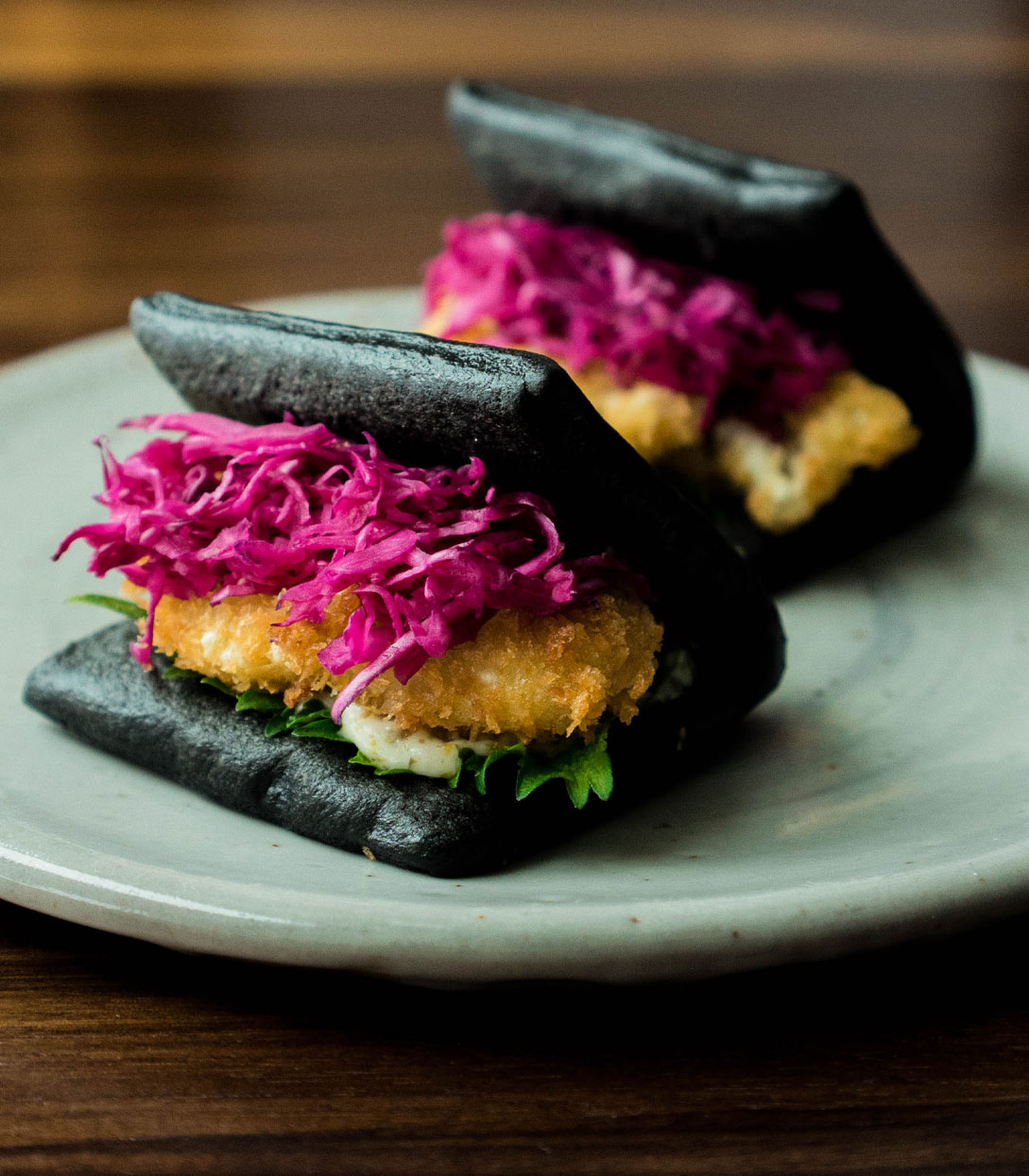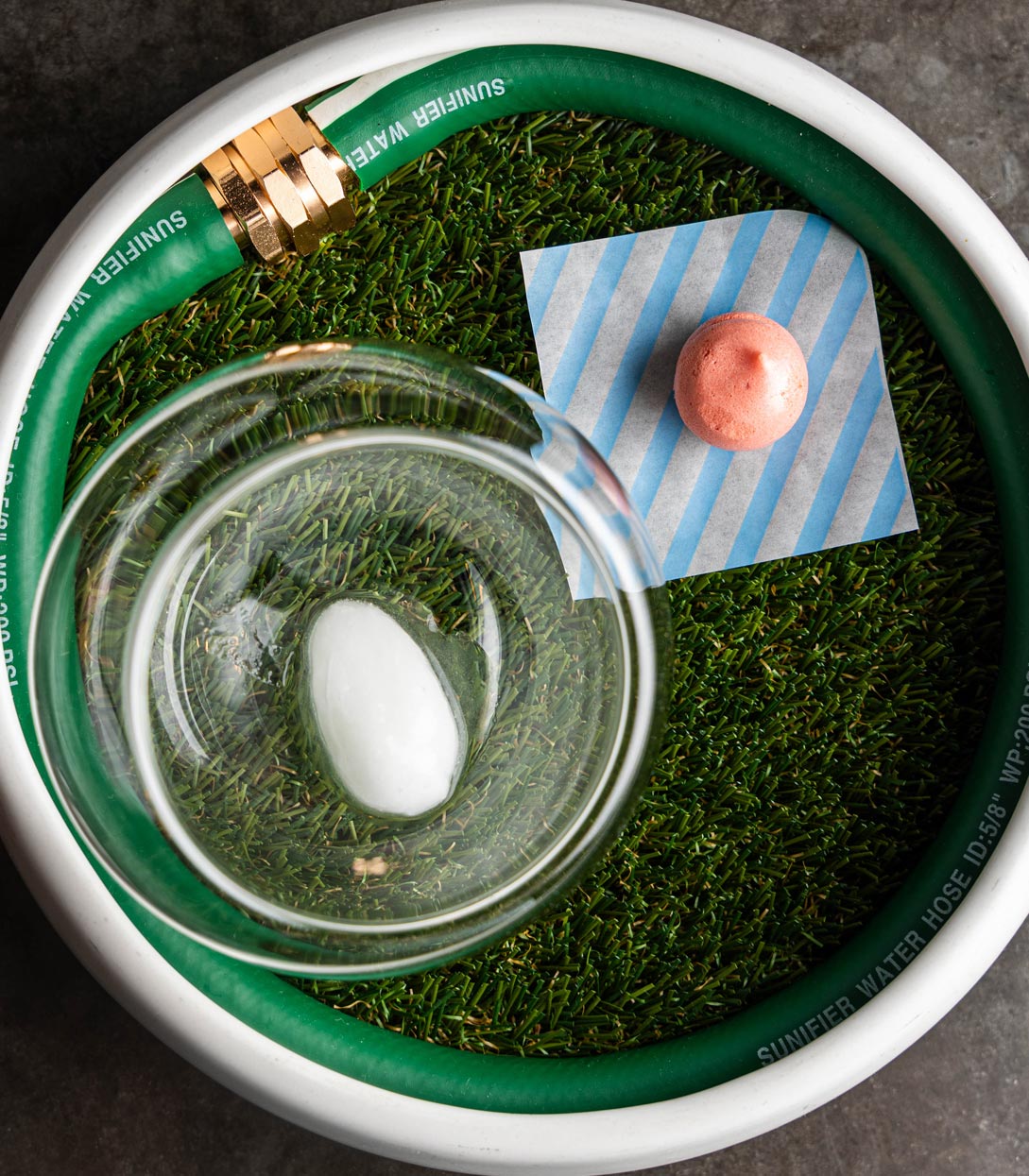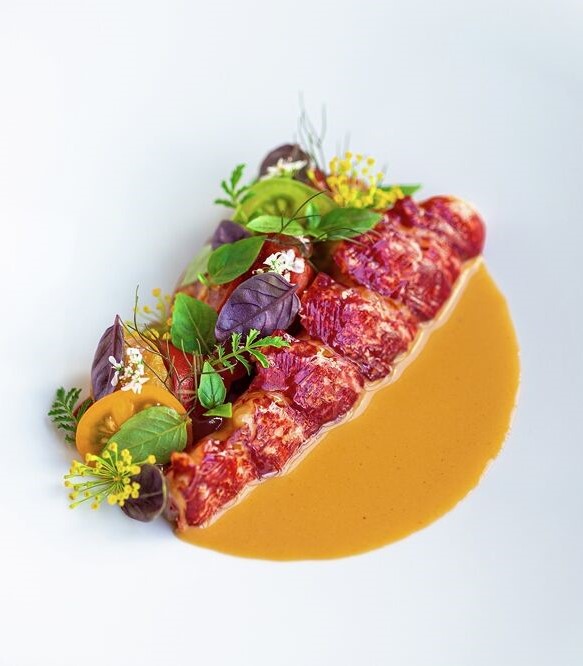No matter the time of year, soups are comfort in a cup: their nostalgia and physical warmth can heat you up from the inside out whether the snow’s falling outside, you’ve had a bad day, or you’ve caught a chill in the air conditioning after a long day in the sun.
Still, we all have that one soup that brings us the most comfort of all — and chefs do, too.
“There’s a tradition that always hits the spot: Mom’s chicken soup. It's a timeless remedy that warms not just the body but also the soul,” says Taewoo Kim, executive chef at Wangbi who remembers this soup as a “gust of warmth and an antidote” to the cold, rainy days during his upbringing in Korea.
Below, Kim shares his favorite recipe alongside seven other chefs; emphasizing how comfort comes in many forms across cultures.
Chicken Noodle Soup
By Taewoo Kim Executive Chef, Wangbi
“What makes this recipe truly extraordinary is its simplicity. Across the globe, in any corner of the world, a simple market stroll guarantees the key ingredient—a whole chicken. So, in those moments when homesickness tugs at the heartstrings, I embark on a culinary journey. With a pot on the stove and the aroma of simmering memories, I recreate Mom's chicken soup—a taste of Korea, a sip of love transcending borders.”
Ingredients:
1 whole chicken
5 cloves of garlic
1 bunch of scallions
Add salt to taste
Method:
Clean the chicken thoroughly.
Nestle it into a pot with cold water, a handful of garlic cloves, and the lively essence of scallions.
Turn on high heat until it starts to boil, then simmer.
Cook for forty minutes until the chicken is tender.
Season to taste.
Tip:
Add half a cup of soju or vodka to eliminate any lingering chicken odor and enhance the soup's flavor.

Creamy Tomato and Cauliflower Soup
By Dan Kluger, chef and owner Loring Place
“One of my favorite soups to make and eat is a cauliflower and tomato soup. I liked the cream of tomato soup but always felt it was so heavy. I created this version using cauliflower to add the creaminess without the heaviness of the cream often found in cream of tomato.”
Ingredients (makes 4 servings):
One 14.5-ounce can whole peeled tomatoes
3 tablespoons extra-virgin olive oil
1 medium Spanish onion, thinly sliced
Kosher salt and freshly ground black pepper
2 large garlic cloves, thinly sliced
1 head cauliflower, cored and cut into 1-inch pieces
3 cups water
½ cup crème fraiche
1 tablespoon sherry vinegar
Chopped chives
Freshly ground black pepper
Extra-virgin olive oil
Parmesan croutons
Method:
Pour the tomatoes into a bowl and crush with your hands. Measure 1 cup of the crushed tomatoes and reserve the rest for another use.
In a large saucepan, heat the olive oil over medium-low heat. Add the onions and a big pinch of salt and cook, stirring frequently, until the onions are very soft, 5 to 7 minutes. (The onions shouldn’t take on any color; lower the heat if they begin to brown).
Add the garlic and cook until soft, about 2 minutes.
Add the cauliflower, tomato and water. Bring to a simmer, cover and cook over low heat until the cauliflower is very tender, 10 to 15 minutes.
Turn off the heat and stir in the crème fraiche.
Blend the soup until smooth, either with an immersion blender or by transferring to a standing blender. Wipe out the saucepan and pass the soup through a fine-mesh strainer, pressing on the solids. Stir in the vinegar and season the soup to taste with salt, pepper, and more vinegar, if needed.
Divide among bowls and garnish each with chives, black pepper, a drizzle of olive oil, and Parmesan croutons. Serve.
The takeaway:
By adding cauliflower and pureeing the heck out of it, you can make cream of tomato soup with very little dairy. (I add a little crème fraiche for extra richness, but you can turn this into a vegan-friendly soup by skipping the dairy altogether.) Keep this trick in mind anytime you’re making a pureed soup; cauliflower won’t overpower most vegetable-based soups.

Clam Chowder
By Michael Balboni, executive chef, Le Pavillon
Ingredients:
1 shallot, thinly sliced (1 oz)
3 tablespoons olive oil
½ cup white wine
2 small cloves garlic, crushed
3 sprig thyme
25 clams in the shell, thoroughly cleaned
½ cup water
2 tablespoons butter
½ leeks, thinly sliced (2 oz)
1 stalk celery, thinly sliced (3 oz)
1 small onion, thinly sliced (4 oz)
6 slices bacon, thinly sliced (3 oz)
½ small Yukon potato, thinly sliced (4 oz)
1/3 cup water
1 cup cream
1 cup creme fraiche
Salt and pepper, as needed
Method:
In a large saucepan over medium heat, combine the shallots, garlic, thyme and olive oil. Cook stirring often until they become translucent with no color. Deglaze the pan with the white wine, add the water and bring to a simmer. Drop the cleaned clams into the simmering pot, cover tightly with a lid and cook until the clams begin to open. Once they open, remove the clams from the pot and let them cool in a bowl. Strain the liquid through a fine-mesh sieve to remove any dirt or shell that could remain.
Meanwhile, in a separate saucepan start the chowder base, gently cook the bacon with the butter until the fat starts to render. Add the leeks, celery, onion and potato, season with salt and pepper and cook over medium heat. Pour the water, clam liquid, cream and creme fraiche over the vegetables and continue to cook gently until all ingredients are very tender.
Blend on high until smooth and pass through a fine-mesh sieve. Adjust the seasoning if necessary and reserve, chilled.
Garnish with the clams, diced blanched potato, diced blanched celery, and bacon lardons.
Matzo Ball Soup with Duck
By Alon Shaya, chef-partner of Pomegranate Hospitality including Safta
“Matzo ball soup is a classic Jewish soup with deep, savory flavors that are comforting in cooler weather but light enough to enjoy all year round. It brings back fond memories of my safta (grandmother), which is why it's such a favorite on our menu at Safta in Denver… This merging of an Italian American and a Jewish classic—matzo-ball soup and Italian wedding soup—feels almost second nature to me,"
Ingredients (10-12 Servings):
1 duck (5 to 6 pounds)
3 pounds chicken feet
1 gallon plus 3 quarts water, divided
1 yellow onion, quartered
1 carrot, peeled and chopped
2 stalks celery, chopped
3 sprigs fresh thyme
3 tablespoons plus 2 teaspoons Morton kosher salt, divided
1 cinnamon stick
8 whole allspice berries
2 star anise pods
2 dried bay leaves
1 teaspoon whole coriander seeds
1 teaspoon whole black peppercorn
1 ⅓ cups matzo meal
¾ teaspoon onion powder
¾ teaspoon garlic powder
½ cup schmaltz (recipe below) or ghee, melted
4 eggs
2 cups cherry tomatoes, quartered
1 quart lightly packed fresh arugula
1 tablespoon lemon juice
Best quality extra-virgin olive oil, for serving
Method:
Lay the duck on a cutting board, breast side up, with the legs facing you. Discard the giblets and neck, or save them for another use. With your knife angled toward the body, cut through the seam between the thigh and the breast. Once you hit the hip joint, pop it loose with your hands, and slice through it to separate the legs. Keeping your knife very close to the bone so you don’t waste any meat, carve along either side of the breastplate and the ribs to remove the meat. Pull the wings taut, away from the body, and cut through the ball joint that attaches each of them to the breast (pop it with your hands, as you did the hip joint, if you have trouble getting through). Set the legs and wings aside to come to room temperature (you’ll be cooking them in about 1 hour) and refrigerate the breasts.
In a large stockpot, combine the duck’s carcass with the chicken feet and 1 gallon water over high heat. Once the water is simmering, reduce the heat to medium and skim away any foam. Continue to simmer, skimming frequently, for about 10 minutes, until you’ve removed as much of the foam as you can.
Add the onion, carrot, celery, thyme, 1 tablespoons of salt, and all the spices. Gently simmer, uncovered, for about 1 ½ hours, until the chicken feet have softened but are not falling apart and all the aromas in the broth are coming together. Decrease the heat a bit if the stock is bubbling too rapidly.
Submerge the duck legs and wings in the stock, and cook for another 75 to 90 minutes, until the meat is pulling away from the bone (the wings may fall apart). Pull them out and reserve, then add the duck breasts to the stock and cook for just another 15 minutes or so, until they’re firm to the touch and no longer pink in the center. Reserve with the rest of the meat, and remove the pot from the heat.
Once the duck meat is cool enough to handle, trim away and discard all the skin and any remaining fat. Slice the breast against the grain, and then cut it into bite-sized pieces; pull the meat off the legs and wings, and roughly chop it. Store all the duck meat in the refrigerator until the soup is ready.
Strain the duck stock, reserving the solids, and allow the stock to cool. You’ll see some fat rise to the top, which adds flavor and body, but you can skim away some or all of it. While it’s cooling, make the second stock: Add all the solids to a separate wide pot or Dutch oven, which you’ll later use to cook the matzo balls, and cover them with 3 quarts of water and 2 tablespoons of salt. Bring to a boil over high heat, then reduce the heat to medium, and continue to simmer for about 30 minutes, until it’s fragrant and tastes well seasoned.
While the second stock simmers, make the matzo balls: In a large bowl, combine the matzo meal, onion powder, garlic powder, and remaining 2 tablespoons of salt. Separately, beat the schmaltz and eggs together, and then add them to the dry ingredients and stir until well combined, with no dry pockets of matzo meal. Press a sheet of plastic wrap directly onto the surface of the dough, and refrigerate for at least 1 hour and up to 4 hours.
Strain the second stock (discard exhausted-looking solids), and either store it for later use or, if you are finishing the recipe now, return it to the sade wide pot and bring it up to a simmer over medium heat.
Roll the chilled matzo-ball dough into tablespoon-sized balls, and as soon as you shape them, drop them into the second stock; they should float in a single layer with a bit of room between them (they will expand as they cook). Leaving the heat on medium, partially cover the pot to cook for about 1 hour. The matzo balls are done when they’re the same color throughout; if you cut one open, it should have the same texture as pound cake. Cover, and remove the pot from the heat while you assemble the soup.
Put the duck stock back in your large pot, and bring it to a simmer over medium heat. Reduce the heat to low, and immediately add the duck meat, tomatoes, arugula, and lemon juice. To serve: Place a couple of matzo balls at the bottom of each bowl, then ladle the soup over it. (The broth you used to cook the matzo balls can be discarded.) Finish with a drizzle of olive oil.
Tip:
Homemade stock provides your soup with a great foundation of flavor. I like to make chicken stock with chicken feet or wings to make it really full-bodied and soothing. I also use a thrifty French technique called remouillage to make the most of every ingredient—after making your first stock, use the spent solids to build a second stock. As with any stock, this takes time but very little effort, and in the case of the matzo ball soup, provides one stock for broth and another for poaching the matzo balls.

Oden
By Hiroki Odo, chef-owner, odo restaurant
“Oden is made at home all over Japan. My hometown is rich in seafood and mountain food, so using these ingredients makes for very flavorful soup in a highly traditional way.”
Ingredients:
2 pieces dried Kombu
3.5 oz dried bonito flakes
5 tablespoons of Soy sauce
50 oz water
1 teaspoon salt
3 oz sake and 3oz Mirin for the soup base.
Add ingredients such as octopus, fish ball, beef tendon, daikon radish, fried tofu, boiled egg and cook all together with light heat for 1 hour and that is all. A very simple recipe!
Tip:
Try not to use too much soy sauce because it erases good "dashi" flavor from dried kelp and bonito flakes.

Gabure
By Drew Belline, VP of Culinary for Rocket Farms Restaurants, Marcel
“We serve French Onion soup at Marcel, but one of our favorite soups is something that we make for our family meal. Gabure is a hearty and traditional French soup or stew, originating from the Gascony region.”
Ingredients (6 to 8 servings):
500g of dried white beans such as tarbais or cannellini
1.5 liters of good chicken stock
300 grams of smoked salt pork like ham hocks or belly
1 large onion, chopped
4 cloves garlic, minced
2 carrots, peeled and chopped
2 leeks, cleaned and sliced
1 large turnip, peeled and chopped
2 potatoes, peeled and chopped
1 small head of cabbage cored and sliced, around 500 grams
1 bouquet of thyme, parsley, bay leaf
Salt and pepper to taste
Option to add in 200 grams of duck confit if available
Method:
Soak the beans submerged in water overnight. Bring to a boil and simmer until tender. Salt to taste once the beans have cooked and allow to cool in the liquid. Once cool, strain and set aside.
In a separate Dutch oven, sauté the salt pork in a little EVOO. Once lightly rendered, add the carrot, celery, onion and garlic and cook for another 5 minutes. Cover with the broth and bring to a simmer. Once it comes up to a simmer add the rest of the veg and the bouquet.
Once tender, shred the salt pork through the soup and remove any bones. Add in the duck confit at this point if you are using it along with the cooked beans and simmer for an additional 15 minutes.
Adjust the seasoning as necessary and add in a liberal amount of freshly chopped parsley. We love to serve with crusty, garlic toasted French bread and a good glug of olive oil.
Bouillabaisse
By Eric Michael, executive chef, The Savoy at 21c Museum Hotel Kansas City
“My favorite soup is bouillabaisse. The flavors, smells and textures transport me to my days as a younger chef. The first time I tried bouillabaisse I was instantly enamored with it. We were making a family meal with clams, mussels, and prawns that had just come off of a previous menu. I remember the smell of the saffron broth filling the entire restaurant. I didn't quite know what to expect as I sat down with a crust of toasted baguette covered in rouille. The first bites were pure joy, but it wasn't until I dipped my bread in the broth and took a bite that I really fell in love.
Ingredients:
125 ml extra-virgin olive oil
150 g diced onion
100 g diced leek (no green tops)
75 g diced fennel
50 g diced carrot
5 cloves smashed garlic
3 large, ripe tomatoes, chopped or 2 cups canned chopped tomatoes
3 qt fresh fish/shellfish fumet
1 bunch each: thyme, parsley, fennel fronds in a bouquet garni
2 strips of fresh orange peel (no pith)
1 big pinch saffron
2 tablespoon sea salt
1 pound peeled and deveined shrimp
1 pound cod, halibut or other flaky white fish
1 pound mussels and clams, scrubbed and mussels debearded
1 oz of Pernod if desired.
Crusty bread and rouille for serving.
Method:
Sweat the onion, leek, carrot and fennel with the olive oil in a medium stock pot over medium-low heat. Add the crushed garlic cloves and saute until fragrant and softened. Add the tomatoes and saffron and bring to a simmer. Add the fumet, orange peel and bouquet garni. Season with salt and white pepper to taste. Bring the broth to a low simmer for 15-20 minutes until the vegetables begin to soften and the broth is thickened slightly. Add the seafood to the broth as it simmers in order of cooking time. Once the mollusks are open, remove from heat and season one more time, I like to add Pernod at this point. Remove the bouquet garni and orange peels. Serve in a large shallow bowl with baguette toasted in olive oil and plenty of red pepper rouille.
Tip:
A helpful tip for making soups [in general] is to arrange all of your ingredients before you begin. It may be tempting to chop as you go but you are much more likely to make a mistake in timing or miss an ingredient if you do not set yourself up for success. When you take the time to prepare all of your ingredients before you begin, it is easy to find enjoyment in the process.

Lentil Soup
By Timo Steubing, head chef at Tambourine Room by Tristan Brandt located in the Carillon Miami Wellness Resort
“My favorite soup is a lentil soup out of the south German region, “Allgäu.” My family is originally from this region and the lentil soup is still very popular in our family. It is a very rich soup with bacon, sausages and spätzle, which makes it also the perfect lunch after a night of one drink too many.”
Ingredients: (4 servings)
300g brown lentils (soaked in water overnight)
100g diced onions
75g diced carrots
50g diced celery root
50g leek in half rings
75g potatoes diced
300g diced bacon
1000g beef bouillon
4 sliced beef sausages
4 tablespoons thin sliced chives
4 tablespoons red wine vinegar
50g butter
2 bay leaves
Salt, Pepper, Nutmeg
For the Spätzle: 200g flour, 2 eggs, 55g sparkling water
Method:
Take a medium-sized pot and glaze the onions till they start to get color. Add the bacon, carrots, celery, leek and potatoes. Keep stirring at medium heat, add the lentils and then the bouillon. Now it’s time for salt, pepper and the bayleaves.
The soup will need to cook on low heat for about 30-40 minutes, during this time prepare the Spätzle.
For the dough, put the flour, egg and sparkling water in a kitchen mixer with a flat beater and mix it on medium speed for about 10 minutes. Let the dough rest covered for 20 minutes.
When the lentils are soft, take a teaspoon and spread the dough into the simmering soup using your thumb.
The spätzle will take about 5 minutes to cook and will thicken the soup. If the soup gets too thick, add a bit of bouillon or water. After all the spätzle is cooked, add the sausages, and check the taste.
Serve the soup in a bowl and sprinkle one tablespoon of vinegar on top. Garnish with the chives and enjoy a piece of southern German food culture (or cure your hangover).
Tip:
Try to use fresh herbs as a topping for your soups, it will bring freshness and an exciting flavor to it. Roasted nuts and seeds are also a wonderful topping as also aged vinegars or cold pressed seed oils.

Hero image: Courtesy of Dan Kluger




















